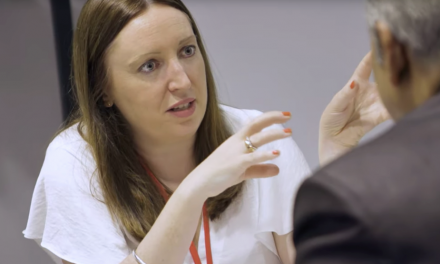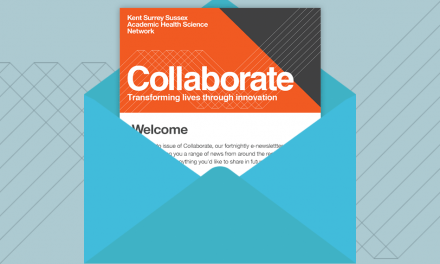Jo Congleton, Co-Clinical Lead of the KSS AHSN Respiratory Programme, reflects on the importance of World COPD Day 2021 on 17 November.
Is World COPD Day 2021 the most challenging yet? In 2020 people with COPD had to contend with their increased risk in the 1st year of the COVID pandemic; infection with SARS-CoV2 was associated with an increased risk of being admitted to hospital, ICU admission and an increased risk of death compared to the non-COPD population (1). However the impact of social distancing and other protective practices meant that hospital admissions for acute exacerbations of COPD (AECOPD) were lower than in previous years – highlighting the link between respiratory infections and AECOPD.
With mandatory mask wearing in public spaces no longer a policy in the UK, and lower than usual immunity to respiratory viral infections in the community due to low exposures in 2020, there is likely to be an increase in respiratory viral infections leading to an increase in admissions with AECOPD this winter.
It has proved hard to restart spirometry services in primary care, meaning that there are many people with symptoms that may be caused by COPD who have yet to have the relevant clinical assessment, and therefore may not be on correct treatment.
Primary care services have been disrupted so the usual number of COPD annual reviews have not been performed. Delivery of the COPD discharge bundle to patients hospitalised with AECOPD is therefore even more important than in previous years.
The discharge bundle comprises five evidence based interventions that every patient admitted with AECOPD should receive:
- Review patient’s medication and demonstrate use of inhaler
- Provide written self-management plan and emergency drug pack
- Assess and offer referral for smoking cessation
- Assess for suitability for pulmonary rehabilitation
- Appropriate follow-up call within 72 hours of discharge
Delivery of the COPD Discharge Bundle is associated with a reduced re-admission rate(2). Kent Surrey Sussex Academic Health Science Network (KSS AHSN) has been running a COPD discharge bundle programme since 2015 and prior to the pandemic found increased delivery of the bundle to be associated with reduced inpatient mortality, reduced length of stay, and a reduction in bed days for AECOPD.
The COPD discharge bundle is one of the work streams in the NatPatSIP (National Patient Safety Improvement Programme) ‘Adopt and Spread’ programme. Working with the National Asthma and COPD Audit Programme (NACAP) the ambition is to increase the percentage of patients admitted with AECOPD who receive all elements of the discharge bundle. The disruption in primary care spirometry means that, for patients treated for AECOPD who have not had confirmatory spirometry, this test should now be added to their hospital pathway.
One aspect of the discharge bundle is assessing inhaler technique. This gives an opportunity to review whether patients are on appropriate inhaled therapy for their disease stage and phenotype, and that they can use their inhaled therapy correctly. It may also be an opportunity to address another issue – that of climate change. Global Warming Potential (GWP) information of inhalers is now available and can help inform a discussion on inhaler choice with patients (3).
It is now time, more than ever before, on having robust processes in place so that respiratory teams can deliver optimal care to patients hospitalised with AECOPD.
References:
- Pardhan S, Wood S, Vaughan M and Trott M (2021) The Risk of COVID-19 Related Hospitalsation, Intensive Care Unit Admission and Mortality in People With Underlying Asthma or COPD: A Systematic Review and Meta-Analysis. Med.8:668808. doi: 10.3389/fmed.2021.668808 https://www.frontiersin.org/articles/10.3389/fmed.2021.668808/full
- NS Hopkinson et al. Thorax 2021;67:90-92. Designing and delivering a COPD discharge care bundle.
- https://greeninhaler.org/the-problem-with-inhalers/ accessed on 15/11/2021




